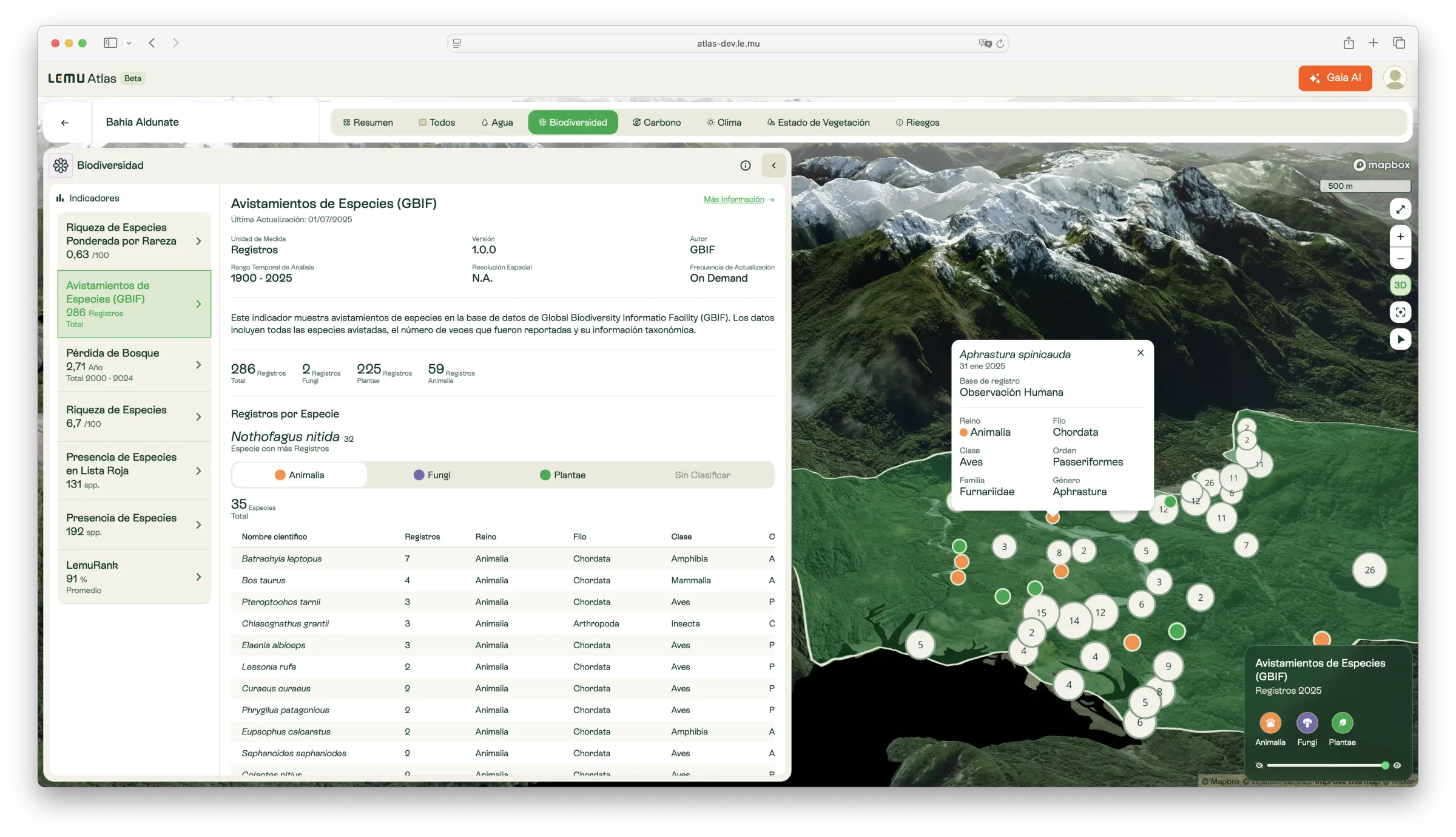Assessing environmental impact is not a side exercise—it is central to business resilience and growth. Understanding in detail how your company interacts with the natural world throughout its value chain can directly strengthen your business model and corporate goals.
Here are six key benefits:
1. Greater resilience to natural phenomena
Ecosystem degradation creates operational and financial risks. Measuring dependencies on nature allows companies to anticipate risks and design adaptation strategies for long-term sustainability.
2. Optimisation of resource use
Without measurement, inefficiencies go unseen. Tracking impact reveals opportunities to reduce waste in water, energy, and raw materials—cutting costs while reducing ecological footprint. For example, satellite monitoring of land use helps agricultural businesses improve irrigation and optimise water consumption without lowering yields.
3. Easier regulatory compliance
Environmental regulations are tightening worldwide, including in Chile. Solid environmental data not only demonstrates compliance but also helps companies anticipate future regulations—reducing the risk of fines and operational restrictions.
4. Better evidence-based decision-making
Reliable data allows companies to design strategies with measurable impact and avoid wasted investments. For example, a renewable energy company can use biodiversity indicators to select optimal sites for new projects, minimising environmental conflict.
5. Ability to demonstrate progress
Public sustainability commitments require verifiable data. Without it, credibility suffers. Transparent measurement builds trust and protects reputation.
6. Meeting investor and consumer demands
Investors and consumers are demanding greater transparency. Verified environmental metrics open new opportunities for financing and strengthen market positioning with environmentally conscious buyers.
Challenges and Solutions in Environmental Impact Studies
The benefits are clear. The challenge lies in execution. Measuring environmental impact is not simple—but with the right tools, it can be.
Here are common obstacles, and how Atlas helps overcome them:
1. High costs and resource demands
Field studies require costly logistics and large teams.
2. Limited or fragmented data
Data gaps and inconsistencies undermine accurate analysis.
3. Complex data processing and storage
Environmental datasets are vast and technically demanding.
4. Difficulty communicating results
Large datasets can overwhelm non-technical teams and audiences.
5. Lack of standardised methodologies
Different frameworks produce inconsistent results.
6. Rapidly evolving regulations
Adapting to diverse and changing rules is challenging, especially across multiple jurisdictions.
7. Integration challenges
Companies often have siloed data sources that don’t connect.
Want to Learn More About Atlas?
Atlas brings together dozens of environmental indicators across carbon, biodiversity, vegetation, climate, risk, and water. It enables companies to make agile, evidence-based decisions about their relationship with nature.
One of Atlas’s greatest strengths is its adaptability—tailored to different industries, scales, and challenges. If your company wants to understand its environmental impact in greater depth, or faces a specific measurement challenge, we’d love to help.
👉 Schedule a free demo in minutes. Let’s explore your company’s needs together and unlock the Nature Intelligence you need to move forward with confidence.


